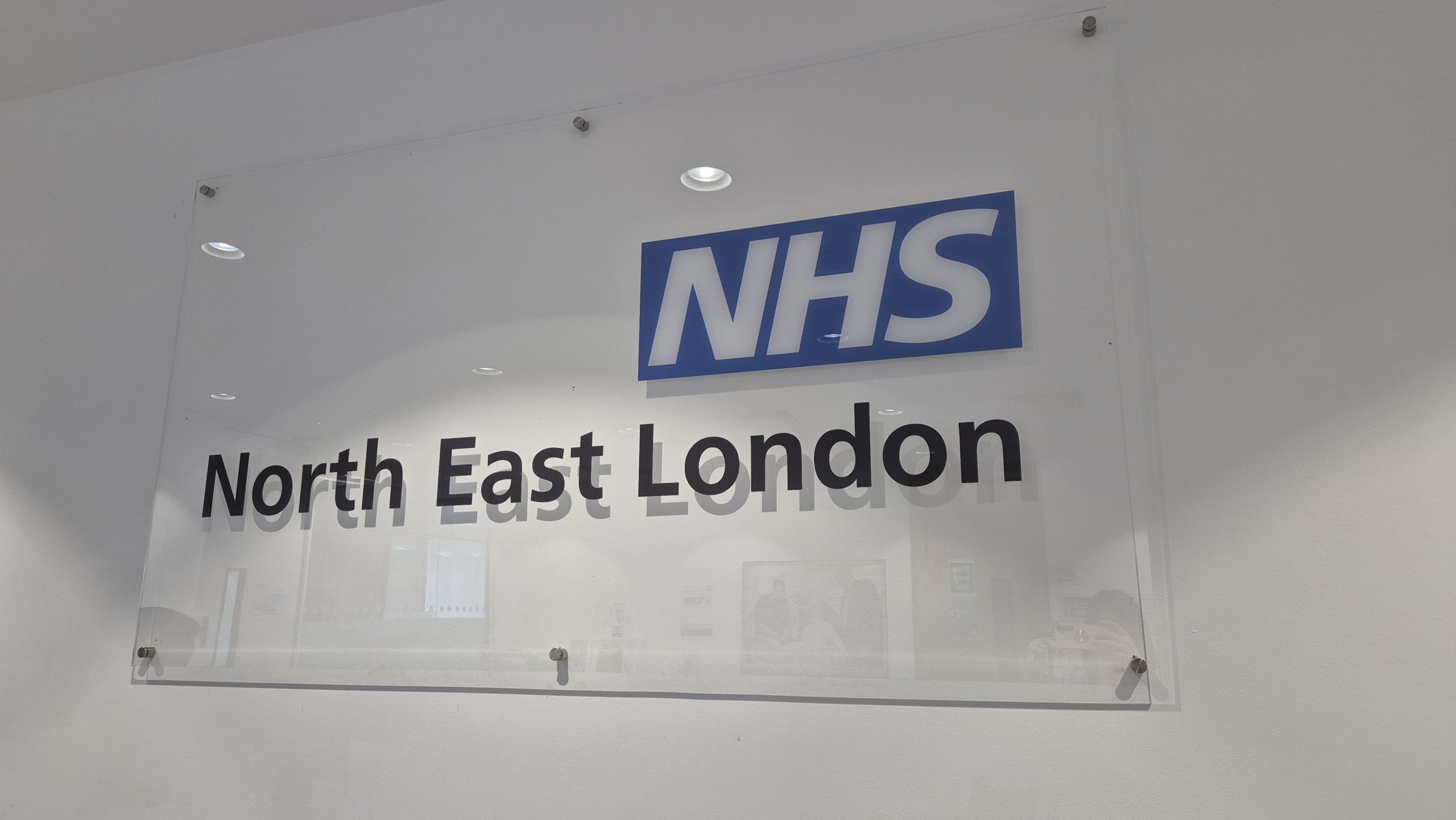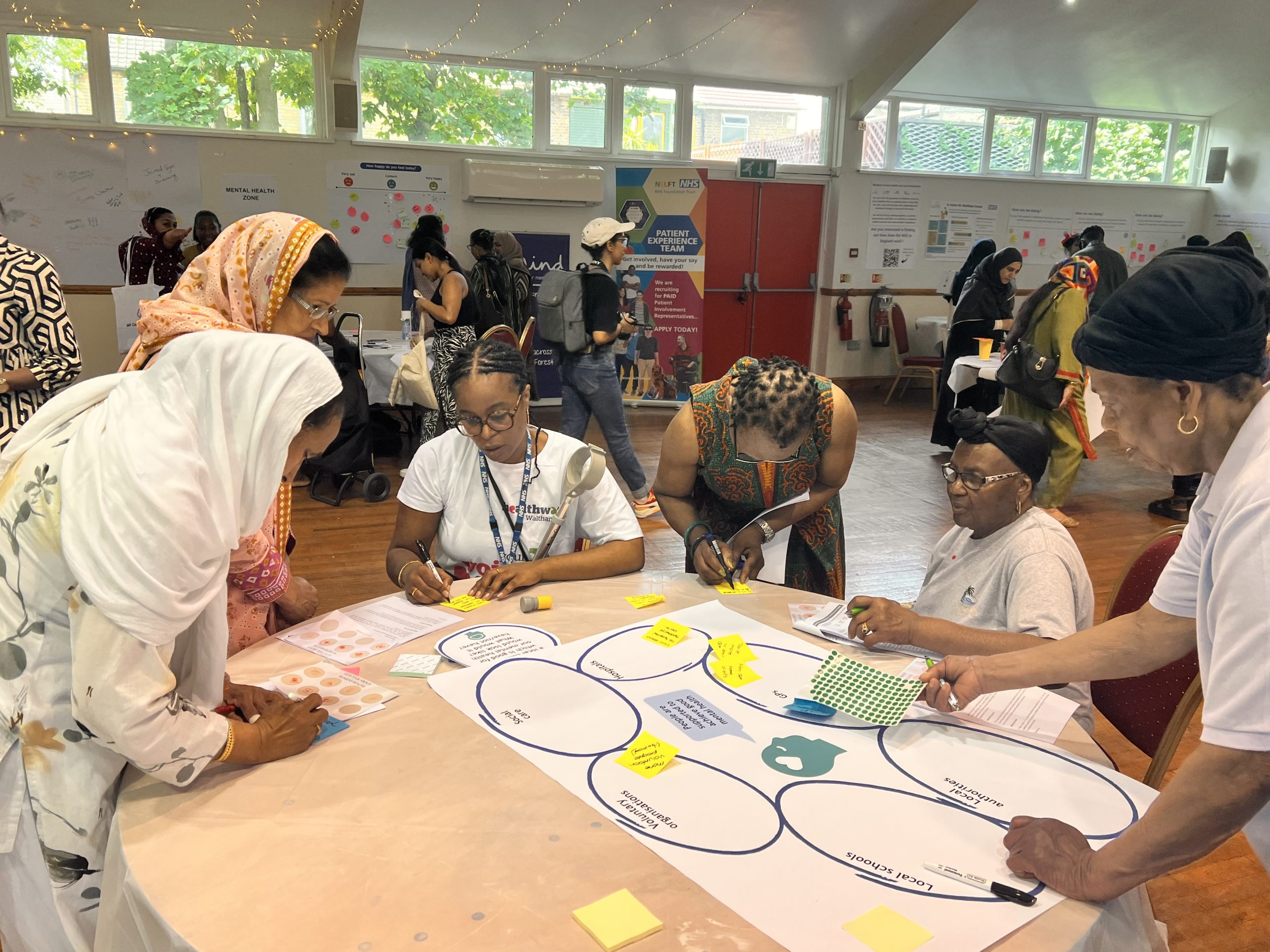

We are committed to promoting equality and diversity among all our staff, stakeholders, service users and patients and fulfilling our obligations under the Equality Act 2010 and the Public Sector Equality Duty.
We are committed to embedding equality and inclusion in everything that we do, but more specifically:
We know that a diverse and inclusive workforce can help us to develop new ways of thinking, leading to improvement and innovation in the way we work. For us, it is vital that all colleagues are treated fairly and are enabled to reach their full potential. We are dedicated to eliminating discrimination, valuing diversity and promoting equal opportunities, to build and sustain an inclusive environment to deliver and receive care.
We have a responsibility for improving health outcomes for some of the most diverse communities in London. Our work to embed equality into the commissioning of health services is underpinned by engagement with our stakeholders. We believe that engagement with and drawing on the expertise of residents, patients, service providers and third sector organisations is critical in shaping services that are of high quality, value for money and reflect the needs of our diverse populations.
We are proud to be a Disability Confident Committed Employer and have active BME, LGBTQ+, ability and women’s staff networks.
Our Diversity and Inclusion Strategy informs our actions to further advance diversity and inclusion. This strategy builds upon much of the excellent work that is already in place and demonstrates our commitment to diversity and inclusion for our workforce, the way we manage our services and our influence with stakeholders. It sets out what our workforce can expect from the organisation, its leaders and from each other in order to foster a culture of inclusion and belonging. By embracing new ways of working, utilising technology and facilitating greater collaboration across our teams, organisations and sectors we can create a workplace environment that supports each and every one of us to feel and perform at our best.
As a public sector organisation, we are required to ensure that equality, diversity and human rights are embedded in all our functions and activities as per the Equality Act 2010, the Human Rights Act 1998 and the NHS Constitution.
The Equality Act 2010 provides a legal framework to protect the rights of individuals and ensure equality of opportunity for all. We have general and specific responsibilities known as the ‘public sector equality duties’.
The general equality duty requires us to meet the three aims of the Act. These are:
Eliminating unlawful discrimination, harassment, victimisation and other conduct prohibited by the Act;
Advancing equality of opportunity between people who share a protected characteristic and those who do not
Fostering good relations between people who share a protected characteristic and those who do not.
Specific equality duties:
To assist public authorities in meeting the three aims of the general duty, specific duties were introduced. Meeting the specific duties provides the public with the information they need to challenge and hold us to account for our performance on equality. The specific duties require us to:
Publish annual equality information to demonstrate compliance with the general equality duty
Prepare and publish one or more specific and measurable objective that we think we need to achieve to further any of the aims of the general equality duty
Full details of the public sector equality duty are available on the Equality and Human Rights Commission website.
The Workforce Race Equality Standard (WRES) was introduced by NHS England and the NHS Equality and Diversity Council in 2015. The WRES was developed as a result of evidence that NHS staff from a Black and Minority Ethnic backgrounds (BME) have a poorer experience at work and have less opportunities than their white colleagues. Implementation of the WRES is a requirement for both the NHS commissioners and providers organisations. The WRES is a key component in how organisations measure their work to deliver tangible and lasting interventions to race equality and inclusion, as well as supporting how, as a commissioner, we deliver on our obligations under the Public Sector Equality Duty (PSED).
Download our Workforce Race Equality Standard (WRES) Report 2020-2021 and Action Plan.
Download our Workforce Race Equality Standard (WRES) Report 2019-2020 and Action Plan.
In 2018 the Workforce Disability Equality Standard (WDES) was launched in the NHS to improve the experiences of disabled staff working in and seeking employment in the NHS. This is a fundamental part of our diversity and inclusion work, and understanding how this issue affects our staff is hugely important to us.
Integrated Care Systems were required to return their workforce data for the WDES in 2021 and as part of this we will also publish our data and develop an action plan to address any disparities.
The gender pay gap is the difference between the average (mean or median) earnings of men and women across a workforce. Organisations with a headcount of 250 or more on their ‘snapshot date’ must comply with regulations on gender pay gap reporting. Gender pay gap calculations are based on employer payroll data drawn from a specific date each year. This specific date is called the ‘snapshot date’. We will publish our gender pay gap annually to understand the size and causes of our pay gaps and identify any issues that need to be addressed. Publishing and monitoring the gender pay gap will help us understand how effective our actions are in reducing it.



We are your local NHS in north east London. Find out more about what we do.

Find out how you can get involved in shaping local health and care services.

Find out more about our health and care partnership and what we to improve local services.
If you would like to leave feedback about how useful you found the content on this page, please complete the form below.

| Cookie | Duration | Description |
|---|---|---|
| cookielawinfo-checbox-analytics | 11 months | This cookie is set by GDPR Cookie Consent plugin. The cookie is used to store the user consent for the cookies in the category "Analytics". |
| cookielawinfo-checbox-functional | 11 months | The cookie is set by GDPR cookie consent to record the user consent for the cookies in the category "Functional". |
| cookielawinfo-checbox-others | 11 months | This cookie is set by GDPR Cookie Consent plugin. The cookie is used to store the user consent for the cookies in the category "Other. |
| cookielawinfo-checkbox-advertisement | 1 year | Set by the GDPR Cookie Consent plugin, this cookie records the user consent for the cookies in the "Advertisement" category. |
| cookielawinfo-checkbox-necessary | 11 months | This cookie is set by GDPR Cookie Consent plugin. The cookies is used to store the user consent for the cookies in the category "Necessary". |
| cookielawinfo-checkbox-performance | 11 months | This cookie is set by GDPR Cookie Consent plugin. The cookie is used to store the user consent for the cookies in the category "Performance". |
| CookieLawInfoConsent | 1 year | CookieYes sets this cookie to record the default button state of the corresponding category and the status of CCPA. It works only in coordination with the primary cookie. |
| viewed_cookie_policy | 11 months | The cookie is set by the GDPR Cookie Consent plugin and is used to store whether or not user has consented to the use of cookies. It does not store any personal data. |
| Cookie | Duration | Description |
|---|---|---|
| __cf_bm | 30 minutes | Cloudflare set the cookie to support Cloudflare Bot Management. |
| Cookie | Duration | Description |
|---|---|---|
| _gat | 1 minute | Google Universal Analytics sets this cookie to restrain request rate and thus limit data collection on high-traffic sites. |
| Cookie | Duration | Description |
|---|---|---|
| _ga | 1 year 1 month 4 days | Google Analytics sets this cookie to calculate visitor, session and campaign data and track site usage for the site's analytics report. The cookie stores information anonymously and assigns a randomly generated number to recognise unique visitors. |
| _gat_UA-* | 1 minute | Google Analytics sets this cookie for user behaviour tracking.n |
| _gid | 1 day | Google Analytics sets this cookie to store information on how visitors use a website while also creating an analytics report of the website's performance. Some of the collected data includes the number of visitors, their source, and the pages they visit anonymously. |
| CONSENT | 2 years | YouTube sets this cookie via embedded YouTube videos and registers anonymous statistical data. |
| Cookie | Duration | Description |
|---|---|---|
| test_cookie | 15 minutes | doubleclick.net sets this cookie to determine if the user's browser supports cookies. |
| VISITOR_INFO1_LIVE | 5 months 27 days | YouTube sets this cookie to measure bandwidth, determining whether the user gets the new or old player interface. |
| YSC | session | Youtube sets this cookie to track the views of embedded videos on Youtube pages. |
| yt-remote-connected-devices | never | YouTube sets this cookie to store the user's video preferences using embedded YouTube videos. |
| yt-remote-device-id | never | YouTube sets this cookie to store the user's video preferences using embedded YouTube videos. |
| yt.innertube::nextId | never | YouTube sets this cookie to register a unique ID to store data on what videos from YouTube the user has seen. |
| yt.innertube::requests | never | YouTube sets this cookie to register a unique ID to store data on what videos from YouTube the user has seen. |

